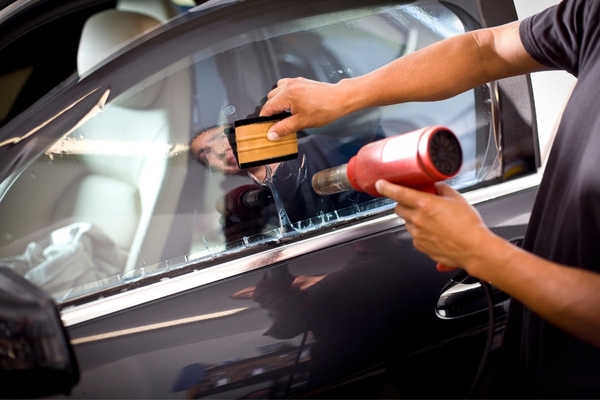Notifications
ALL BUSINESS
COMIDA
DIRECTORIES
ENTERTAINMENT
FINER THINGS
HEALTH
MARKETPLACE
MEMBER's ONLY
MONEY MATTER$
MOTIVATIONAL
NEWS & WEATHER
TECHNOLOGIA
TV NETWORKS
VIDEOS
VOTE USA 2026/2028
INVESTOR RELATIONS
COMING 2026 / 2027
ALL BUSINESS
COMIDA
DIRECTORIES
ENTERTAINMENT
FINER THINGS
HEALTH
MARKETPLACE
MEMBER's ONLY
MONEY MATTER$
MOTIVATIONAL
NEWS & WEATHER
TECHNOLOGIA
TV NETWORKS
VIDEOS
VOTE USA 2026/2028
INVESTOR RELATIONS
COMING 2026 / 2027
About Me
 All2Gether Signs
All2Gether Signs All2Gether Signs is a leading provider of vehicle wraps in Boca Raton, Pompano Beach, Fort Lauderdale, and Boynton Beach. We specialize in transforming vehicles with custom full and partial wraps, decals, and fleet graphics. Our focus is on delivering high-quality, visually stunning designs using durable materials and expert craftsmanship.
 All2Gether Signs -
Jun 2 -
Other -
Car window tinting
Window Tint
-
202 views -
0 Comments -
0 Likes -
0 Reviews
All2Gether Signs -
Jun 2 -
Other -
Car window tinting
Window Tint
-
202 views -
0 Comments -
0 Likes -
0 Reviews

Car window tinting is more than just a cosmetic upgrade—it's a functional investment that can improve your driving experience, protect your vehicle’s interior, and even enhance safety. However, not all window tints are created equal. Among the most popular options on the market today are ceramic and dyed window tints. While both can reduce glare and improve privacy, they differ significantly in performance, durability, and price.
If you're considering tinting your car windows, it’s crucial to understand the differences between ceramic and dyed window tint. This article breaks down the pros, cons, and ideal use cases for each, helping you determine which one is the best fit for your needs.
Dyed window tint is one of the most common and affordable types of window film. It’s made by placing a dye layer between an adhesive and a protective outer layer. When applied to a window, the dye absorbs sunlight and reduces the amount of visible light that enters the car.
Affordability:
Dyed tint is the most budget-friendly option, making it accessible for drivers looking for basic heat and glare reduction without breaking the bank.
Appearance:
It provides a dark, matte look that many drivers find visually appealing. This makes it a popular choice for those seeking aesthetic enhancement on a budget.
Glare Reduction:
Dyed tint does a decent job of reducing glare from sunlight and headlights, which can make driving more comfortable.
Privacy:
It significantly darkens the windows, offering increased privacy and some deterrence against theft.
Limited Heat Rejection:
Unlike more advanced films, dyed tint doesn’t block much infrared (IR) radiation, which means it’s less effective at keeping the interior cool.
UV Protection:
While it does block some UV rays, the level of protection is lower than what you’d get with higher-end films like ceramic.
Fading Over Time:
The dye layer can fade or turn purple with prolonged exposure to the sun, which affects both performance and appearance.
Durability:
Dyed films are less durable and more prone to bubbling or peeling, especially if not professionally installed.
Ceramic window tint is a high-performance film made with non-metallic, non-conductive ceramic particles. Unlike dyed or metalized tints, ceramic films do not contain dyes or metals, making them ideal for modern vehicles that rely heavily on electronic systems.
Superior Heat Rejection:
Ceramic tints excel at blocking infrared radiation, making them extremely effective at reducing heat buildup inside the vehicle.
Maximum UV Protection:
High-quality ceramic films block up to 99% of harmful UV rays, offering superior protection for both passengers and interior materials.
No Signal Interference:
Because ceramic is non-metallic, it won’t interfere with cell phone signals, GPS, or radio frequencies—a major advantage over metalized tints.
Durability and Longevity:
Ceramic tint is known for its durability and resistance to fading, bubbling, or discoloration. It can last for many years with minimal maintenance.
Enhanced Visibility:
Even with a lighter shade, ceramic tint offers strong UV and heat protection without compromising visibility, which is excellent for nighttime driving.
Higher Cost:
Ceramic tint is significantly more expensive than dyed or hybrid options. Prices can range from $400 to $800 or more for a full vehicle tint.
Professional Installation Required:
Given the high-quality materials and performance expectations, ceramic film should always be installed by an experienced professional to avoid application issues.
| Feature | Dyed Window Tint | Ceramic Window Tint |
|---|---|---|
| Cost | Low | High |
| Heat Rejection | Basic | Excellent |
| UV Protection | Moderate | Up to 99% |
| Fade Resistance | Fades over time | Resistant to fading |
| Signal Interference | No interference | No interference |
| Durability | Lower | High |
| Appearance | Matte, dark look | Clearer with premium feel |
| Visibility at Night | May be darker and harder to see through | Better visibility even with tint |
| Installation | Easier to install (DIY possible) | Requires professional installation |
Are on a tight budget.
Want a basic level of glare and UV reduction.
Care primarily about privacy and style.
Plan to keep the vehicle for a shorter period or don't mind reapplying tint in a few years.
Dyed tint is ideal for economy cars, older vehicles, or drivers who simply want a cost-effective upgrade without needing the highest level of performance.
Want the best heat and UV protection available.
Live in a hot or sunny climate and drive often.
Are concerned about long-term durability and fading.
Use GPS, Bluetooth, or mobile devices frequently in the car.
Own a newer or high-end vehicle and want to protect its interior.
Ceramic tint is best for luxury cars, daily commuters in hot climates, or anyone seeking maximum performance and longevity from their tint investment.
Before making your decision, it’s essential to check your local tint laws. Each region has its own rules about how dark or reflective your tint can be, especially for front windows and windshields. Ceramic tints often come in various visible light transmission (VLT) levels, allowing you to stay compliant while still getting top-tier performance.
Some dyed tints may be darker but not necessarily better in terms of heat rejection or legality. Always consult with a certified installer to ensure your tint meets local regulations.
When choosing between ceramic and dyed window tint, it ultimately comes down to your budget, performance needs, and long-term goals. Dyed tint offers an affordable way to improve your car’s look and privacy, while ceramic tint delivers unmatched performance, durability, and protection.
If you're planning to keep your vehicle for several years or drive frequently in sunny or hot environments, ceramic tint is likely the better long-term investment. However, if you're just looking for a simple, cost-effective improvement, dyed tint could be exactly what you need.
Whichever option you choose, professional installation and compliance with local laws are key to getting the most value and satisfaction from your window tint.
